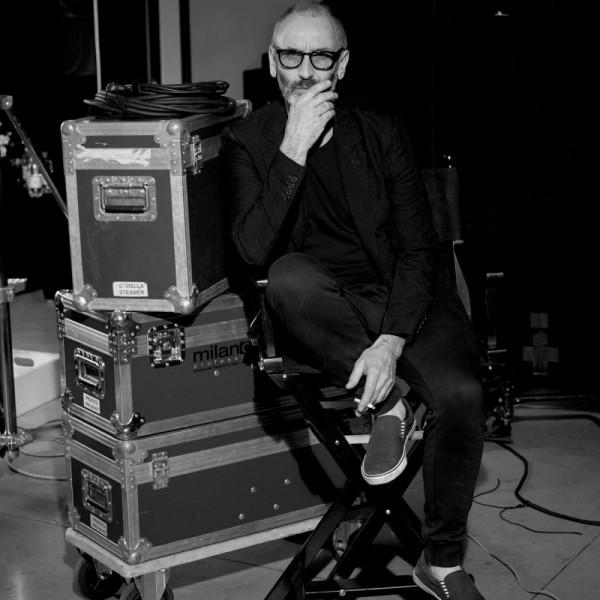Interview mit Tom Munro
Interview mit Tom Munro
Tom Munro
16. September 2018
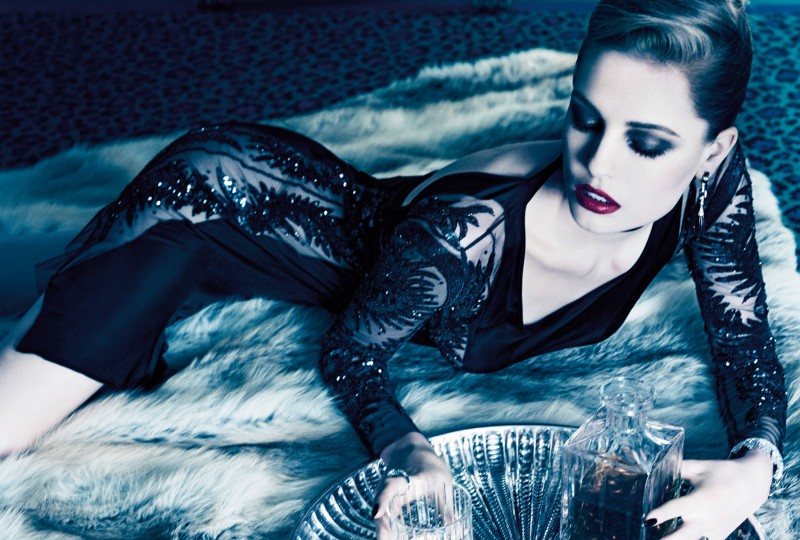
Nadja Bender, Vogue Italia
Tom Munro: It really came about by S Magazine approaching me and asking if I’d be interested in working with them and developing a project. I think the team were surprised to hear that I’d been using the S system for the last ten years; so I suggested, “Why don’t you use the last decade of my work as a portfolio rather than me shooting something new?” The pictures in this magazine represent the past decade’s work, using the Leica S system. I bought the S2s, and then the S 006s as soon as they were released. Then the S 007s came out so I upgraded again.
How has your last decade of work differed from previous decades?
I have been through different periods in my career. For the first ten years I was very much a fashion photographer. This was in the late ’90s. I started in 1997 and for the first decade I was shooting a lot for British Vogue, American Vogue, and Italian Vogue; I’ve always worked for Italian Vogue.
From 2001, I started shooting celebrities. I had a contract with a magazine called Details in New York, which lasted about five years. I did a lot of celebrity covers and shoots for them, mostly of men: the first person I shot was Johnny Depp. Following on from that, I started shooting actors and musicians in addition to fashion.
Was Johnny Depp the first big celebrity you shot?
Yes, I think he was doing a film in Montreal – so we shot him there. I’d met him once or twice because I worked with Kate Moss in those days. In the last few years I’ve done a lot of celebrity shoots, whether it’s advertising with celebrities as subjects, or editorials.
You’ve had an ongoing collaboration with Madonna – who once said, “To have your picture taken by Tom Munro, is kind of like smoking a bubblegum cigarette. You can strike a pose, look cool, get all of the sweetness, and not suffer any side effects” – for many years. How did that come about?
The relationship with Madonna started in 2008 when I shot her for an editorial with Arianne Phillips. Arianne has been Madonna’s stylist, a fashion visionary and a collaborator for many, many years, so it was really thanks to her that I first worked with Madonna. Arianne also does film and has been nominated two times for an Oscar, she is an incredible costume designer. On the basis of that first shoot, Madonna said, “Would you like to do a music video?” I explained that I’d never done one before, but Madonna said, “Oh, you’ll be fine!” That led to our first music video, which was for a song called Give It 2 Me with Pharrell Williams, and our collaboration grew and lasted for many years.
Can you tell me about the shoot with Madonna that closes this issue?
It was a shoot for L’Uomo Vogue, a men’s magazine. The fashion was more masculine, so it seemed like a fun idea to make Madonna more tomboyish. Madonna’s a performer who always gives so much of herself to the creative process. This is one of the shoots I’ve done with her I’m most proud of, it was very much about Madonna, myself, and Arianne – just the three of us, together with a hair and make-up team – we were left to our own devices and we just played.
It has been an inspiring and memorable journey with Madonna, pop icon and visionary, and a highlight in my career. I suppose it was from directing five music videos and films with her that some of the fashion brands I already worked with asked me to start doing commercials and films for them. I recently directed two TV commercials for Lancôme that come out this fall. It’s been an important part of my evolutionary journey from stills photography to incorporating directing and film.
How different do you find the process of directing compared to stills photography?
I see it as a natural transition or progression. Capturing a moment in a stills image requires great discipline and concentration, and I find that the process of directing is freer in a way. You’ve got a camera operator, someone doing the focusing, lighting technicians, so there’s a lot more support, whereas when you’re doing a stills shoot, apart from a handful of very helpful assistants, the hair and make-up team, and the fashion editor, it’s very much down to the photographer in the end. But it’s all a collaboration, whether it’s film or stills. If you’re doing a shoot for a fashion house or a fragrance campaign, it’s a collaboration between a number of people, including creative directors and so forth, so in that sense it’s not dissimilar to being on a film set as a director. The approach is the same. It’s always a collaborative process.
On the subject of collaboration, what makes for a harmonious working relationship with a celebrity?
I think it’s very much that we’re all individuals and some people you click with better than others, and that’s just human nature. Any successful relationship is based on mutual respect and trust, and my job, my role is to be proud of what I’m doing but also, hopefully, for the people I’m photographing to feel equally inspired and excited by the pictures, and the clients too!
I’ve had a long relationship with Armani, for example, who I’ve worked with fairly consistently since 2002. They’re a long-standing client. Obviously it is important to understand the brands one shoots for and to have a clear understanding of each clients individual needs. Recently we’ve been doing a lot of the advertising with Cate Blanchett, and that’s been a really lovely collaboration. Cate and I have also collaborated on editorial shoots for Italian Vogue and other publications. Does that answer your question?
Very nicely, yes. Let’s talk about the shoot with Cate that begins this issue.
The fashion is Armani, and I thought an interesting way to shoot the collection would be to reference the avant-garde. This included looking at Man Ray, solarization, and other photographers of that era, which is how this avant-garde-esque shoot came about.
Why did you want to open with these images?
Cate and I have enjoyed a very productive and harmonious creative journey together with Mr. Armani. It’s one of my more recent relationships and collaborations, and I wanted to celebrate “CATE”. She’s an incredible subject to photograph. She’s a beautiful woman, an amazing actress and refreshingly down to earth.
How did you first get involved with Armani?
Through my work and building my career. I started my journey as a photographer in January 1997 and I first worked for Armani in 2002. Over the first five years of my career, I shot a lot for British Vogue and did multiple cover stories for them as well as for other magazines. I shot a lot for L’Uomo Vogue, and Italian Vogue, and still do. Franca Sozzani was a great support to me from day one, as are today’s Editor-in-Chief, Emanuele Farneti, and Creative Director, Giovanni Bianco. Giovanni I have known for 20-plus years and we’ve worked on most of the Madonna projects together.
I guess as you become more visible, brands start recognising your name and your pictures. Then you get a phone call, or your agent does, and off you go. Obviously you have to be dedicated and focused. You can’t go back and do it again, particularly when celebrities are involved, which is one of the challenges of being a fashion photographer: there’s always a very limited amount of time in which to produce what is needed and to interpret the brief, if there is a brief. It’s about one’s own personal aesthetic and style. In my case, as I progressed through the years, one thing led to another.
I’ve also found throughout my career that Italian people are very loyal. Franca supported me for more than two decades, the collaboration with Mr. Armani has lasted for many years. Now I have an equally enjoyable relationship with Dolce & Gabbana who I’ve been working with for about six years. It does seem more than a coincidence that you’re invited to be part of the family in the Italian arena, and I guess one has to deserve or earn that.
One of my favourite pictures from the following pages is of Scarlett Johansson sitting in front of this incredible Mediterranean bay. It’s a beautiful image, really, really stunning, and I was wondering where it was shot.
It was for a cosmetic campaign for Dolce & Gabbana, who were having their first couture show in Taormina, Sicily. Not only was I invited to document the couture by Stefano and Domenico, but we also did this advertising shoot with Scarlett. It was quite challenging, partly because it was about 100 degrees. We were on a rooftop, and the brief was to capture Scarlett, the landscape and the sea in one image. They didn’t want to comp in the background. The challenge was to create beautiful light on Scarlett while still seeing the background. We blocked out all the sun on Scarlett and lit her with enormous HMIs [Hydrargyrum medium-arc iodides], or movie lights, and then brought the value of her exposure up to the exposure of the background. With all that lighting, it was probably about 120 degrees. A very hot day!
Do you get to spend a lot of time in Italy?
I tend to nip in and out for shoots in various countries and not get to stay for extended periods of time because normally I’m off to do another shoot. I’ve been to Milan multiple times. I’ve been to Florence, which was incredible, directing a music video with Madonna. I’ve just been to Lake Como with Dolce & Gabbana who were having their Alta Moda show there, so I did a shoot for Italian Vogue covering the couture, as well as for American Vogue. In my world, I zoom around. I’m somewhere for three or four days. It’s quite a nomadic lifestyle.
Do you enjoy that nomadic lifestyle?
I do. It certainly keeps me stimulated and for the most part I see people that I’ve known in the industry for years and who are friends. The travelling is the least exciting part of it but, whichever destination I’m going to, it’s nice to see friends at the other end. I enjoy what I do. It takes commitment and it’s a way of life.
What about your dog, Finch, where does he live when you’re off around the world?
He goes to stay with people that he’s very happy to be with. Finch is wonderful; man’s best friend, as they say.
Let’s jump back to that moment in 1997. How did your career really get going in earnest?
I studied photography at Parsons in New York. I’d never been to New York before. I really wanted to go to Parsons in Paris but was advised, “If you want to do photography, you need to go to New York because that’s where the main photography department is.” So I ended up in New York somewhat by chance. After Parsons I returned to England for a bit, but nothing really happened, so I moved back to New York and worked for the iconic photographer Steven Meisel for about three years. I learned a great deal there. I met a lot of people while I worked as an assistant, so when I started on my own I already knew a lot of the top models like Linda Evangelista, Naomi Campbell, Amber Valletta, Kate Moss and Stella Tennant. Although my role as assistant was to be seen and not heard, I was on set to support, to work hard and not to socialize, yet I always felt 100% respected.
It was January 1997 when I set myself up as a photographer by borrowing money to buy some cameras. By March I did my first shoot for British Vogue. That led to various other shoots and covers with Stella, Naomi, Kate, Carolyn Murphy, Angela Lindvall, Bridget Hall and Gisele, amongst others. My first celebrity Vogue cover was with Nicole Kidman. It was an exciting time for me. My very first paid shoot was for Calvin Klein and then within a few more months I was doing shoots for Harper’s Bazaar. All that then led to a period with American Vogue and so yes, one thing just led to another. I’ve been through different moments in my career. When you start out you’re trendy and everyone wants you, then things settle down. By now I’ve created a solid foundation for my ongoing career. You have to be, at least I have found, totally committed to what you’re doing and to your life as a photographer, as do the people that you surround yourself with. I’ve been very fortunate, working with extremely talented art directors, fashion editors, hair and make-up artists, and set designers, so over the years I’ve built respect and with these teams; talents and friends we venture into and go through exciting collaborative journeys, creating “dreams”.
It’s an extraordinary leap to begin your career in January and find yourself shooting for Vogue in March. How did that happen?
From memory, I think Vogue were interested in working with me and my agent at the time was like, “I don’t think he’s quite ready, he’s just starting”, but they were insistent, and so we began working together and didn’t stop for many years. I’d had a good photographic background by then. I believe you have to have a kind of innate sense and an understanding of light, which is obviously extremely important. It’s something within me. It’s hard to explain, you either have it or you don’t.
Going back even farther, how did you end up at Parsons?
It was in the early ’90s when I went to Parsons. I was in my late 20s by that point. It had taken a while for me to find my thing, which really happened by having a camera, a second-hand Leica R4 – and going travelling with friends through Asia and Australia in the mid ’80s. I just took pictures and my friends would say, “Your pictures are better than everyone else’s.” When I came back from that year off I still wasn’t sure what I wanted to do, so I enrolled in an art foundation course in Norfolk, England, and after that I thought, “Yes.” I think it was partly my age as well. I was in my mid to late 20s and thought, “I had better make sure that this works because I can’t keep chopping and changing.” I think I really decided at that point I was going to be a photographer and take whatever came my way. Parsons was very exciting, being in New York for the first time, the scale of Manhattan, the people, the visual overload. I used to run up and down 5th Avenue pretending I was Garry Winogrand, taking a lot of pictures of people’s backs, a lot of street photography. Whilst at Parsons I was exposed to the world of fashion photography, which was not the case in provincial England doing an art foundation course.
Earlier on when I lived in England with my family, our next-door neighbours happened to be American and one of their daughter’s friends, who was a model, came to stay. I went to stay with her in Paris for a bit and would pick her up from shoots, and it seemed like an exciting way to live one’s life, or more exciting than what I’d been doing prior. That partly gave me the bug. This must have been during my late teens, so long before Parsons. There was just some kind of feeling inside me that I should give photography a try; but at the time, a guy from provincial England going to New York and becoming a fashion photographer seemed as ambitious as flying to the moon. I didn’t have any connections in the industry, so luck played a big part I guess; but then I think to some extent you make your own luck. I was just very determined. I didn’t know what else I wanted to do so I decided I was going to be a photographer. There’s quite an amusing story about myself and a really great friend of mine still: we were sitting around the table at our flat, we’d probably had a few too many drinks, and he said he was going to be a film producer and I said, “I’m going to be a photographer then.” He is now a film producer and apparently I’m a photographer. I don’t know. I think in life, if you want something badly enough you can make things happen, even in a highly competitive industry.
So what was your upbringing like?
I grew up in the English countryside. My father had a firm of estate agents, which is where I started working when I left school. He sold country houses and was a land agent and an auctioneer. When my parents were still together we had a holiday cottage in Norfolk, so Norfolk’s always played a big part in my life. I went to boarding school in Cambridge, to St John’s College School at the age of seven. My mother’s quite creative and has flair, and my father has always been very interested in architecture, and has written a couple of books on the topic. He would drag the three of us kids – I have two sisters – around churches and stately homes. I think a lot of those visits, however subconsciously, gave us an understanding of form, composition and design. My elder sister is a painter and my younger sister’s also not a bad photographer and a psychotherapist. We’re all quite creative.
Life’s about so many different factors. It’s what you’re exposed to in childhood, through your schooldays, your adolescence, into your teens and beyond. Obviously you keep growing. I was taught at a young age to appreciate a good piece of furniture, a painting, or a fine building. I suppose that grew into a fascination with all things beautiful. People, faces, fashion and taking pictures came later. I get tremendous stimulation through my work and from the people I meet, and I’ve met some amazing people.
Speaking of which, we’ve chosen your portrait of Angelina Jolie for the cover. Could you tell us more about that shoot?
I’d never worked with Angelina Jolie before. It was an advertising shoot for Guerlain, which is, I believe, the oldest fragrance house in Paris, founded in 1828. The intention was to create an iconic, timeless picture. It was brave of Guerlain not to take a conventional fragrance picture. It was abstract and graphic. It was black and white. Quite unconventional for a fragrance campaign, I’d say.
Some other pictures in this issue really caught my eye as well. Could you tell me more about your Naomi Campbell shoot for Vogue Brasil?
My good friend Carlyne Cerf de Dudzeele, who has been a force in fashion for many decades; for example, Carlyne was the first fashion editor at Vogue to style a Chanel jacket with a pair of jeans – certainly not what one did with a Chanel jacket in those days. I believe the clothes were all pulled from Naomi’s personal archive; there’s Alaïa, Chanel, Versace, so the story was a celebration of those designers, and Naomi’s relationship with them. Oribe, the hairstylist, used this incredible honey-coloured wig, and a lot of wind. I first met Naomi in 1994 when I started as an assistant in New York. I love her, she’s a very genuine person. I just saw her in Lake Como when I shot the Alta Moda show for Dolce & Gabbana, which she was part of. It was due to Naomi that I had the honour of meeting and photographing Nelson Mandela – another huge privilege in my career, unforgettable!
We have some fantastic pictures of Justin Timberlake too. How long have the pair of you been collaborating?
The first time Justin and I met was in the early 2000s. He had just left NSYNC and was breaking out as a solo artist. We did a cover shoot for Details magazine, which led to various other editorials and projects, such as a campaign for Givenchy’s fragrance Play, with art director David Anton. The pictures in this issue were originally shot for his album, The 20/20 Experience, with art director Doug Lloyd. I’ve been to two or three of his concerts. He’s been a loyal supporter and collaborator, on and off, for about 16 years, which is rare.
Earlier you mentioned your transition from shooting mostly fashion editorial to working more with celebrities. Was that a personal choice or just a reflection of wider changes in the industry and society?
It was a mixture of things. It was the advent of celebrities as opposed to models being used for the branding of fragrances, cosmetics and fashion. It’s different shooting celebrities, what can I say? If you’re shooting models every day, in a way it can be more relaxed. You’re all there to create the best pictures you can. Certainly in the beginning, I always felt a bit more anxious when I was shooting celebrities who often come with an entourage. You see these people on the TV or in movies and they’re über famous, and to begin with I found it a bit intimidating. However, I think one of the reasons I’ve maintained that part of my career is that I’ve never been obsessed with celebrity. With all the experience I’ve now had, I take the view that we’re all in it together as like-minded, creative people who all have our quirks, myself included. I’ve become more comfortable as I’ve grown older and evolved.
You also mentioned Garry Winogrand earlier. Which photographers really inspired you when you were starting out?
At first my dream was to become a Magnum photographer. At that time my inspiration was triggered by the likes of Bruce Davidson, Josef Koudelka, Philippe Halsman, as well as Winogrand and others. I have always been a fan of Irving Penn and Richard Avedon. Whilst at Parsons I became more interested in the fashion world. The American model I’d met in my late teens had worked with Steven Meisel, and introduced me to Steven’s work. I started buying Italian Vogue when I was 18 or 19 and became fascinated by his pictures, he was the only photographer I wanted to work for. In fact my very first assisting trip with Steven was to Florida to shoot Madonna for a Versace campaign at Mar-a-Largo, which was then President Trump’s private house. I understood from that first trip, and watching Steven work over the three years that I assisted him, that it’s about the study of people, creating the unexpected and twisting the picture whilst doing justice to the fashion.
Let’s talk about the S system. What attracted you to it in the first place?
I’ve worked with various camera systems over the years and I used to – well, I still do – a lot of studio work, but I also like going on location and doing other projects. I never wanted to be branded as just a studio photographer, or just a location photographer. I think that was something that came from my time working as an assistant, when the variety of the work that I witnessed was so inspiring. I wanted to have a similar flexibility and variety within my own career. Going from a bulky medium-format camera to maybe shooting with a 35 millimetre camera on location is what one generally did, but then I discovered the S system, which was rather like shooting with the ease of a 35 millimetre camera – it was the same shape and design – but it had the quality of a medium- format camera or better. I decided that instead of buying two camera systems I was going to buy one that did everything I wanted it to do. I enjoyed using the S2s and the S 006s and I’m now greatly enjoying using the S 007s, as well as building a relationship with Leica.
Are there any images from this issue that feel particularly relevant to you?
To me, they’re all relevant, and that’s not a cop out; I always set out to do my best when I’m behind the camera, and so looking back through the last decade I recall various feelings and emotions, both good and bad. However I am very proud of my first Vanity Fair cover, with Adele and the fashion director Jessica Diehl, and I also love the beach shoot with model Edita Vilkevičiūtė and the hugely talented Paul Cavaco as fashion editor. The “beach” was a set in a studio with a painted backdrop, and I am especially proud of the lighting as people find it hard to believe we were in a studio. Paul and I recently shot an Armani story for Italian Vogue which is due out in September.
Some shoots are harder than others for no particular reason. That’s just the way they go sometimes. It’s a creative process. Being a photographer is also about solving problems, especially ... how can I say this ... obviously people want to look their best. Some people are more photogenic than others, some come with greater trust than others. Some people are less secure than others, so one has to build that trust in a very short space of time to do them justice. That’s my role, I am there to protect my subjects and to make them look as good as I possibly can. You don’t just grab the camera and start snapping away. It’s work. You have to think about what you’re doing.
What’s happening with the world at the moment is that we are saturated with pictures and imagery – today everyone is a photographer through camera phones, Instagram and other social platforms. It’s important to stay true to the craft, but one must embrace change to keep moving forward.
Looking back on your career so far, what have been the most memorable moments for you?
Shooting Dustin Hoffman was certainly one of them. I had met his daughter in New York before, so that perhaps broke the ice a bit. He’s just a lovely man and insisted on cooking myself and my assistant bacon and eggs in the morning, and we just had a lovely day taking pictures together. While we were shooting, he asked me if I shot film. He said, “You’ve directed me better than half the directors I work with.”
In 2010, I produced a book based on my collaborations with celebrities – a friend of mine was the CEO of Moët Hennessy USA, part of LVMH, and suggested we create a book and have an exhibition in LA the night before the Oscars, which we did. Madonna came, Justin came, and Dustin Hoffman and his wife Lisa. It was at that pre-Oscar night party that Dustin told some of the press there, “I don’t know if Tom realizes he’s a director, but he should be making films.” This was around the same time I was doing videos with Madonna, so between Dustin Hoffman’s compliments and working with Madonna, I thought, “Well, maybe I should listen to these two.”
You’ve recently moved back to London. Why did you decide to leave New York?
I can’t say it was an easy decision to leave. Actually it was quite a difficult decision after being there for the best part of 20 years. But I turned 50, and my parents are ageing, and I’ve been fairly absent in their lives for the last 20 years. I also felt like I wanted a creative change. I’ve had an incredible time in New York and it will always be a big part of my life and career, as will many other parts of the world; but it was about change. I felt like I needed to change it up. I had my own studio in Manhattan and I wanted to free myself of the various ties that I had, which were in a way preventing me from being more explorative, whether it was geographically or creatively.
Where do you go for inspiration these days?
I think I’m constantly looking. If you’re a photographer you see the world in a different way. Recently, with the 72 Tokyo project that was published in LFI Magazine – I’d gone to Tokyo in 2014 to direct a TV commercial for a make-up brand. Having never been to Tokyo before, but having always been a great admirer of Japanese photographers and high-contrast black and white photography, I thought, “I’m going to stay for as long as I can” – which was only about three days before going to LA to do another job. I really forced myself to stay there for three days, jet-lagged and low on sleep and, with my assistant at the time, spent 72 hours running around Tokyo taking the pictures, day and night, that ended up in the show I’ve just had at the Store X, in London. It was a really inspiring, exciting, freeing experience. I didn’t have the creative teams around me. I didn’t have an art director. It was just me as a photographer in the purest sense, and I remember getting on the plane to LA and thinking how phenomenal the Tokyo experience had been.
I’m planning on doing a series of 72-hour projects in places I’ve never been to before, because visually it’s so stimulating and refreshing. It was something that was completely non-fashion and really took me back to my roots, if you like, when I was at Parsons running up and down 5th Avenue or Coney Island and just taking pictures for the joy and beauty of taking pictures.
I love that project. I’m half-Japanese but I’ve never lived there, so 72 Tokyo reflects my own experiences of finding myself sleepless in the middle of Tokyo whenever I go to visit.
It’s this beautifully crazy world with such a variety of traditional Japanese ways of life, and then the younger generation and their computer games, robots and fashion sense – there was this amazing contrast of different eras and values within one culture. I started tearing the pictures apart and making a collage 3 metres high and 44 metres long, and it was really through the making of the collage that I felt most reflected the experience I had there, which was rushing around, chaotic, exhausted, excited, adrenaline rushes and all the rest of it.
Do you know when you’ll shoot your next 72 project?
I intend shooting one quite soon. It’s partly about creating the time to do it – even though my aim is to go somewhere and limit myself to 72 hours, because I enjoyed the manic pace of it and just not thinking about anything else for 72 hours, apart from what you see in the camera and what you take pictures of. Found moments, like when I found the geishas in Kyoto; some of those images are quite studied portraits, and people thought that I’d spent a lot of time on them. I spent about ten minutes with the geishas. Again, that comes from experience and evolving over the years as a photographer, and being able to capture something that feels very studied and formal in a moment. One builds a subconscious image bank in one’s head and then draws from it, be it photography, films one has watched, art history or everyday life.
I’m attracted to beauty and, as I said, I think a lot of that has to do with my upbringing and going to school in Cambridge surrounded by magnificent architecture, singing in St John’s College Chapel, a very fine Tudor building, every Sunday and being exposed to the classics, music and learning to play the trumpet, violin and piano; most of which I’ve sadly forgotten, like the Latin I learned at school.
Everything I have been exposed to in life has led me to a world that is primarily figurative and focused mainly on the female form, beauty and an admiration for women.
If you look at my pictures, the eyes are often a powerful feature and a strong part of the image. This is something that fascinates me, being able to look into people’s eyes, and see how those eyes express so much emotion, be it personality, intellect, vulnerability, fragility or strength. It’s about forming a connection and a relationship with my subject, often in a very short space of time, as I mentioned, where there is mutual respect and trust, which allows me to get extremely close to those sitting in front of my lens, creating the sensitive and sensual pictures for which I am known.
Every experience is unique and therefore the possibilities are infinite, as is one’s own evolutionary path. One just has to keep one’s eyes open!
Dieser Artikel wurde ursprünglich vom Leica S Magazin veröffentlicht.
Tom Munro+-
Der Brite Tom Munro, heute einer der renommiertesten Fashion- und Celebrity-Fotografen, begann seine Karriere Ende der 80er-Jahre an der Parsons School of Design in New York. Später produzierte Munro auch Musikvideos, unter anderem für Madonna, und Werbespots für exklusive Marken. Seit 2005 engagiert sich Munro bei MEAK (Medical Educational Aid to Kenya), einer britischen Wohltätigkeitsorganisation. Mehr

Nadja Bender, Vogue Italia
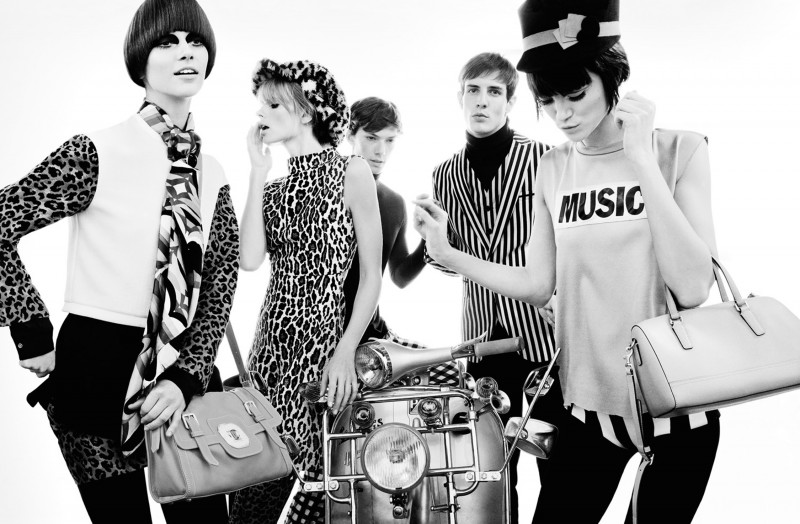
Alana Zimmer, Julia Stegner, Kasia Struss, W-Magazine
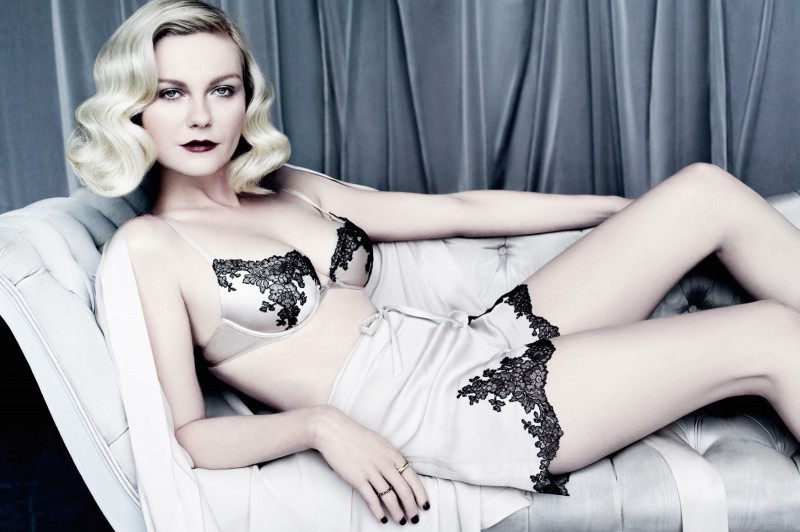
Kirsten Dunst, Vanity Fair
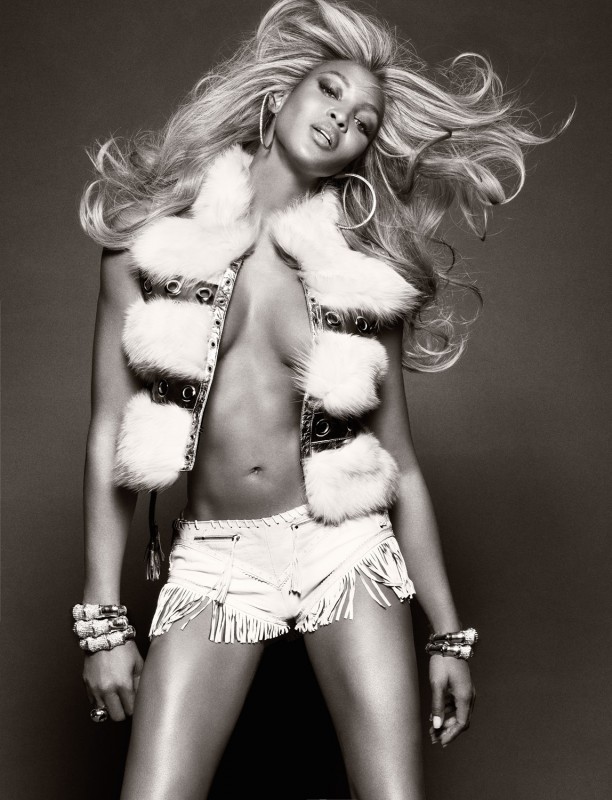
Naomi Campbell, Vogue Brasil
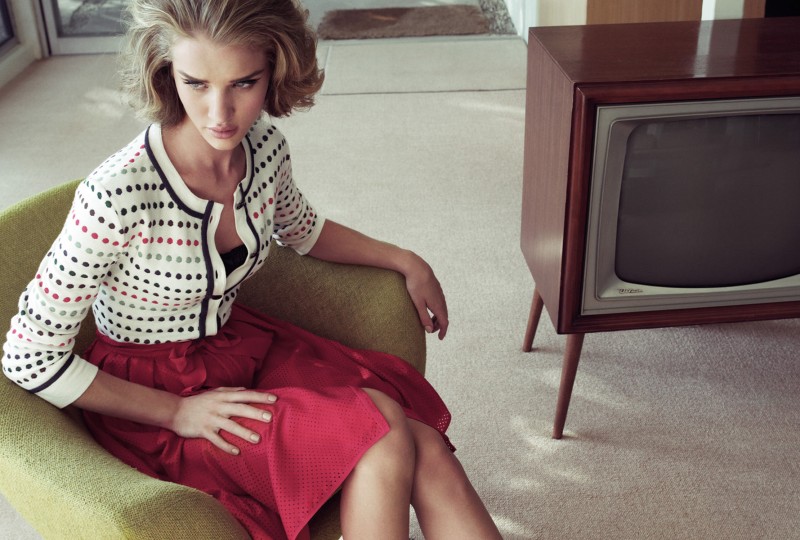
Rosie Huntington-Whiteley, Harper’s Bazaar UK
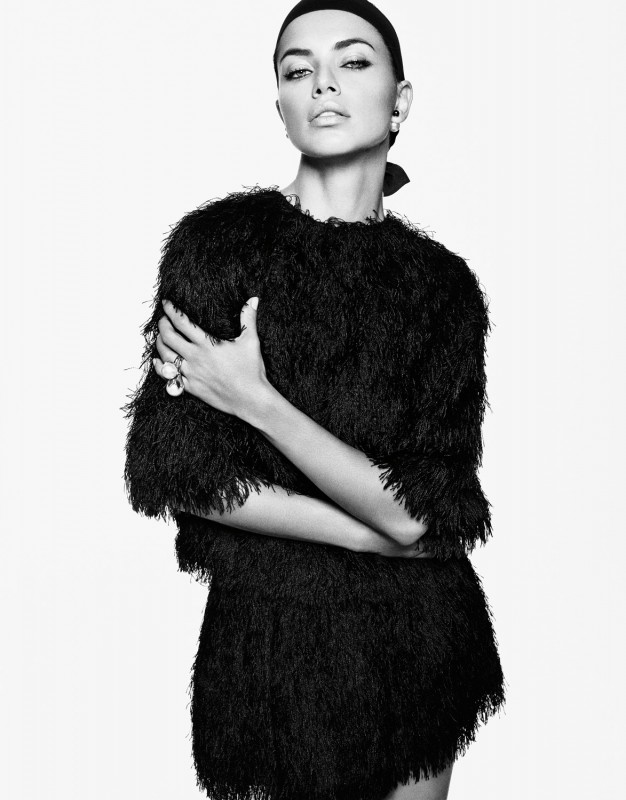
Adriana Lima, Vogue Japan
